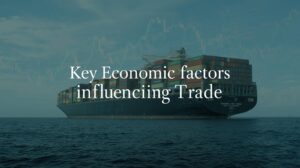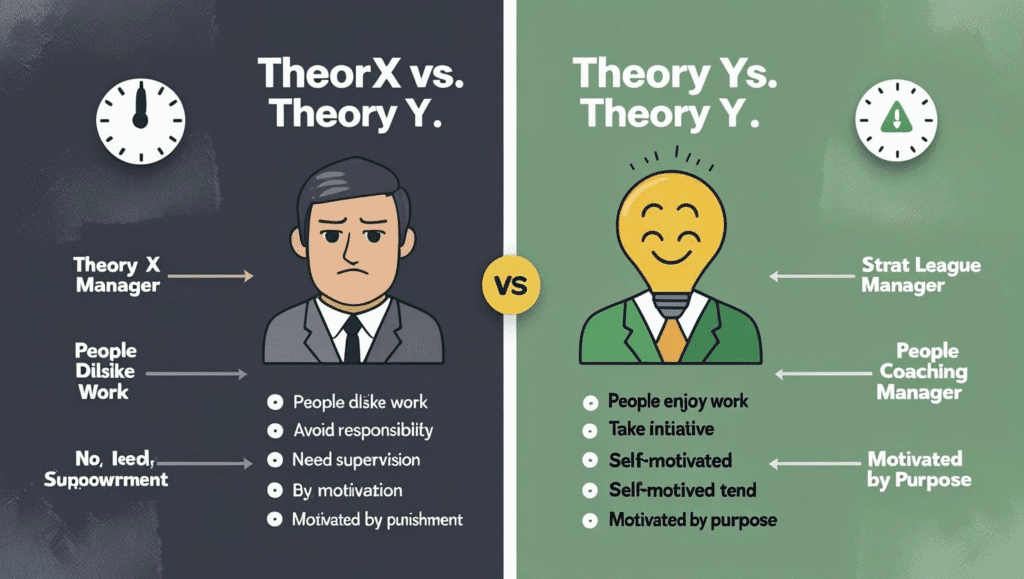🌐 A Nation’s Economic Health: The Engine of International Trade While global politics and international agreements set the rules of trade, a country’s internal economic character dictates how it plays the game. A nation’s economic factors create a unique fingerprint that determines its strengths and weaknesses as a global trading partner. Understanding these factors is crucial for businesses and policymakers alike to navigate the complexities of importing and exporting. Let’s break down the most influential economic conditions.
Key Economic Factors Influencing Trade
💸Inflation Rates
Inflation measures how quickly the general price level of goods and services is rising, and subsequently, how fast purchasing power is falling.
How it Affects Trade:
- Exports Suffer: High domestic inflation makes a country’s goods more expensive to produce. This higher cost is passed on to global markets, making exports less competitive against goods from low-inflation countries.
- Imports Increase: When domestic goods become more expensive, foreign goods (imports) appear relatively cheaper to local consumers. This often leads to an increase in imports and can contribute to a trade deficit.
💱Exchange Rates
The exchange rate is the value of one country’s currency in relation to another. It’s one of the most powerful and direct levers on trade.
How it Affects Trade:
- A Strong Currency makes a country’s exports more expensive for foreign buyers but makes imports cheaper for its own citizens. This tends to slow down exports and boost imports.
- A Weak Currency makes a country’s exports cheaper and more attractive to the world market, while making foreign imports more expensive for its citizens. This tends to boost exports and slow down imports.
📈Economic Growth (GDP)
Gross Domestic Product (GDP) measures the total value of goods and services produced in a country. A growing GDP signals a healthy, expanding economy.
How it Affects Trade:
- Strong Growth: When an economy is growing, incomes rise, and businesses and consumers have more money to spend. This leads to increased demand for all goods, including imports. A growing economy also produces more goods and services, potentially increasing its capacity for exports.
- Weak Growth (Recession): In a recession, incomes fall and demand contracts. This reduces the appetite for imported goods and can put pressure on the country to increase exports to stimulate the economy.
🏦Interest Rates
Set by a country’s central bank, interest rates have a powerful, though indirect, effect on trade, primarily through their influence on the exchange rate.
How it Affects Trade:
- High Interest Rates attract foreign investors seeking better returns on their capital. To invest, they must buy the local currency, which increases demand for it and strengthens the exchange rate. As mentioned above, a stronger currency tends to hurt exports and help imports.
- Low Interest Rates can have the opposite effect, leading to a weaker currency and making exports more competitive.
🛠️Factor Endowments
This refers to the raw materials, natural resources, and labor characteristics that a country naturally possesses.
How it Affects Trade:
- Natural Resources: A country with abundant oil, minerals, or fertile agricultural land will naturally become a major exporter of these commodities (e.g., Brazil with coffee, Australia with iron ore).
- Labor: A country with a large, low-cost labor force may specialize in manufacturing exports. A country with a highly educated, skilled workforce may specialize in exporting high-value services like software engineering, finance, or medical research.
🏗️Infrastructure Quality
This is the physical backbone of trade—a country’s ports, roads, railways, airports, and telecommunications networks.
How it Affects Trade:
- High-Quality Infrastructure reduces the cost and time of transporting goods. Efficient ports and smooth highways make it cheaper to get exports to global markets and distribute imports domestically. This is a significant competitive advantage.
- Poor Infrastructure creates bottlenecks, delays, and added costs (e.g., from spoilage or damage). This “friction” makes a country’s exports less competitive and raises the final price of imported goods.
The Government’s Role
It’s important to remember that these factors don’t exist in a vacuum. Governments actively influence them through monetary policy (controlling interest rates and money supply), fiscal policy (taxation and spending), and direct trade policies (like tariffs and subsidies) to shape the country’s trade balance.
Conclusion: A Reflection of National Economy
A country’s performance in the global marketplace is ultimately a reflection of its internal economic strengths and weaknesses. Factors like stable inflation, a competitive exchange rate, strong GDP growth, and modern infrastructure all combine to create a powerful engine for exports. Conversely, weaknesses in these areas can create significant headwinds. For businesses and nations alike, success in international trade begins with a deep understanding of these foundational economic realities.
Frequently Asked Questions (FAQ)
Which economic factor has the most immediate impact on trade?
The exchange rate generally has the most immediate and direct impact on international trade. A sudden change in a country’s currency value instantly alters the price of its exports for foreign buyers and the price of imports for domestic consumers, directly influencing trade flows in the short term.
How can a country with few natural resources still be a major exporter?
Countries with few natural resources, like Japan, South Korea, or Switzerland, become major exporters by focusing on other factor endowments. They invest heavily in developing a highly skilled and educated workforce, fostering innovation, and building advanced technology and manufacturing capabilities. They import raw materials and export high-value finished goods, such as electronics, machinery, pharmaceuticals, and financial services.
What’s the difference between fiscal and monetary policy in relation to trade?
Monetary policy, controlled by a central bank, primarily involves managing interest rates and the money supply. It has a more direct impact on trade by influencing exchange rates and inflation. Fiscal policy, controlled by the government, involves taxation and government spending. It has a more indirect impact by influencing overall economic growth (GDP) and consumer demand for imported goods.
Does a trade deficit always mean a country’s economy is weak?
Not necessarily. A trade deficit (importing more than you export) can be a sign of a strong, growing economy where consumers are wealthy and have a high demand for foreign goods. For example, the United States has historically run a large trade deficit while having a robust economy. However, a chronic, long-term deficit can also signal a lack of domestic competitiveness, which can become a problem over time.


